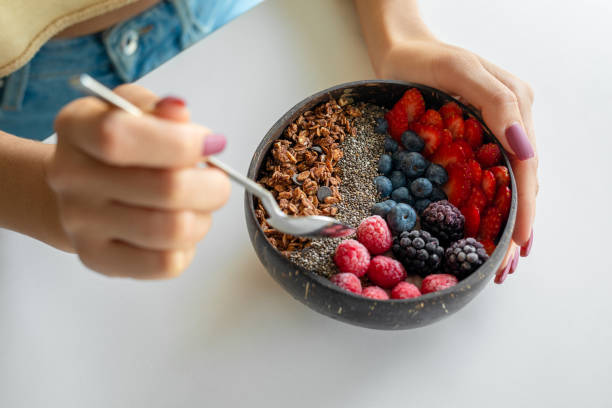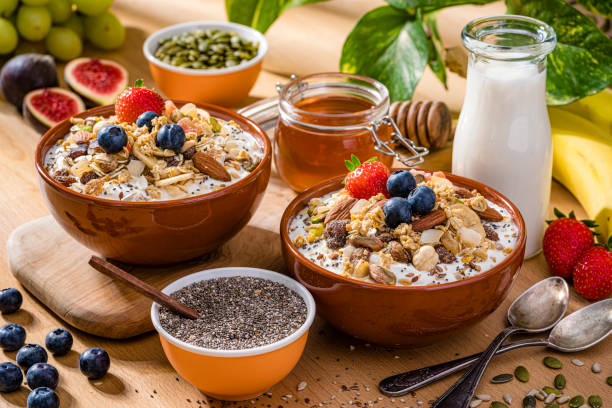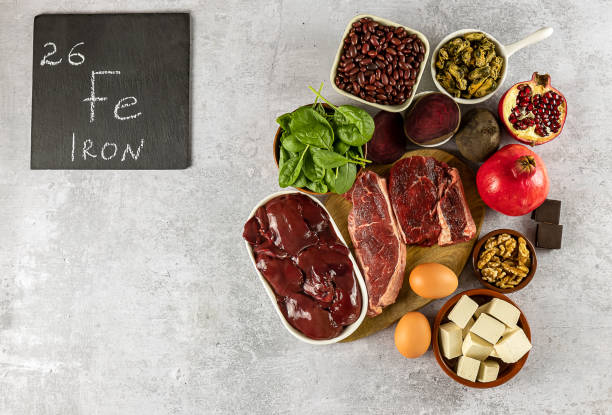Imagine savoring a bowl of vibrant berries or a crisp salad full of nutrient-packed greens and wondering if these “superfoods” truly live up to their hype. Many of us are bombarded with claims that a handful of these foods can revolutionize our health. But what is the reality behind these claims? This post delves into the science behind superfoods, examines the evidence, and offers actionable insights to help you decide if incorporating them into your diet is worth the investment.
Unpacking the Concept of Superfoods
The term “superfood” is often thrown around in health magazines and social media posts. In essence, superfoods are nutrient-dense foods believed to provide significant health benefits beyond basic nutrition. They are rich in antioxidants, vitamins, and minerals, and have been associated with a lower risk of chronic diseases.

However, while these foods are indeed beneficial, the concept of superfoods can be misleading if it suggests that no other foods offer similar benefits. A balanced diet is key. The science behind superfoods lies in their high concentrations of compounds like polyphenols, omega-3 fatty acids, and fiber, which support various bodily functions.
What Does Research Say?
Scientific studies on superfoods have produced promising results, but the findings are often nuanced. Researchers have identified several key benefits:
- Antioxidant Activity: Many superfoods are rich in antioxidants, which neutralize free radicals and reduce oxidative stress.
- Anti-inflammatory Properties: Chronic inflammation is linked to many diseases, and certain superfoods can help moderate this inflammation.
- Nutrient Density: Superfoods often pack more vitamins and minerals per calorie compared to other foods, making them excellent for overall health.
- Disease Prevention: Diets rich in superfoods have been linked to reduced risks of heart disease, diabetes, and certain cancers.
Despite these benefits, it’s important to recognize that no single food can provide all the nutrients you need. Rather, superfoods should be part of a diverse diet that includes a wide range of fruits, vegetables, lean proteins, and whole grains.
Evaluating the Hype: Are Superfoods a Miracle?
While the science behind superfoods is compelling, the notion that they are a miracle cure can be problematic. Here are some points to consider:
- Cost vs. Benefit: Superfoods often come with a higher price tag. Is the additional cost justified by the incremental benefits they provide?
- Balanced Diet: Focusing too much on superfoods might lead to an imbalanced diet. Traditional whole foods like apples, carrots, and brown rice also offer essential nutrients.
- Moderation is Key: Incorporating superfoods into your diet can boost health, but they should complement, not replace, other nutritious foods.
Table: Nutrient Comparison of Common Superfoods
| Superfood | Key Nutrients | Potential Health Benefits |
| Blueberries | Antioxidants, Vitamin C, Fiber | Reduced oxidative stress, improved heart health |
| Kale | Vitamins A, C, K, Calcium | Anti-inflammatory, bone health |
| Salmon | Omega-3 Fatty Acids, Protein | Cardiovascular health, brain function |
| Quinoa | Protein, Fiber, Magnesium | Supports muscle repair, digestive health |
| Chia Seeds | Omega-3 Fatty Acids, Fiber, Calcium | Improved digestion, sustained energy |
This table offers a snapshot of how different superfoods compare in terms of their nutritional profiles and potential benefits. While each food has its own unique advantages, no single item is a substitute for overall dietary variety.
How to Incorporate Superfoods into Your Diet
If you’re ready to explore the benefits of superfoods without falling prey to marketing gimmicks, consider these actionable tips:
1. Start with Small Changes
Begin by adding one or two superfoods to your meals rather than overhauling your entire diet. For example, sprinkle chia seeds on your morning yogurt or blend a handful of spinach into your smoothie.
- Actionable Tip: Experiment with recipes that incorporate superfoods in creative ways, such as quinoa salads or kale chips.
2. Focus on Whole Foods
Remember that the best way to enjoy the benefits of superfoods is as part of a balanced, whole-food diet. Complement your superfood intake with a variety of fruits, vegetables, lean proteins, and whole grains.
- Actionable Tip: Plan your weekly meals around seasonal produce to ensure a diverse intake of nutrients.
3. Read Labels Carefully
Not all products marketed as superfoods are created equal. Look for whole, unprocessed foods rather than heavily processed options with added sugars or artificial ingredients.
- Actionable Tip: When buying packaged superfoods, check the ingredient list and nutritional information to ensure you’re getting a pure product.
4. Listen to Your Body
While scientific research provides a solid foundation, personal experience is invaluable. Pay attention to how your body reacts to dietary changes and adjust your intake of superfoods accordingly.
- Actionable Tip: Keep a food journal to track any improvements in energy, digestion, or overall well-being when incorporating new superfoods.
Debunking Common Myths
There are several misconceptions about superfoods that can cloud judgment. Let’s debunk a few of them:
- Myth 1: Superfoods Can Replace Medication.
No food, no matter how nutrient-dense, can replace the role of prescribed medication. Superfoods are meant to support overall health, not serve as a cure-all. - Myth 2: You Need to Eat a Lot of Superfoods for Benefits.
Even small amounts of superfoods can contribute to a healthier diet. Overconsumption is not necessary and can lead to nutritional imbalances. - Myth 3: Only Exotic Foods Qualify as Superfoods.
Many common, affordable foods like oranges, carrots, and lentils are nutrient powerhouses too. The label “superfood” is more a marketing term than a scientific classification.
Expert Opinions and Real-World Applications
Nutrition experts often emphasize that while superfoods offer unique benefits, they are most effective when integrated into a broader healthy lifestyle. Dieticians recommend focusing on variety and moderation rather than relying solely on superfoods.
For instance, a diet rich in fruits, vegetables, whole grains, and lean proteins is consistently shown to reduce the risk of chronic diseases. Superfoods can enhance this foundation by providing additional antioxidants and anti-inflammatory compounds.
Real-world applications of superfoods include:
- Meal Planning: Creating balanced meals that include a mix of superfoods, such as a salad with kale, blueberries, and quinoa.
- Snacking: Replacing processed snacks with superfood-based options like a handful of nuts or a smoothie enriched with spinach and chia seeds.
- Cooking Techniques: Incorporating superfoods into daily recipes to boost nutrient intake without making drastic changes to your eating habits.
Integrating Superfoods with Broader Health Goals
Incorporating superfoods is not just about the food itself—it’s about aligning your dietary choices with your overall health goals. Superfoods can be a part of a strategy to improve energy levels, enhance mental clarity, and support long-term wellness. By choosing nutrient-dense foods, you create a foundation for a healthier lifestyle that extends beyond your diet.
For those interested in exploring additional natural ways to enhance health, you might find useful insights in 10 Natural Ways to Improve Your Insulin Sensitivity. The post provides practical tips that can complement your nutritional strategy.
Later in your journey toward a holistic lifestyle, you might also want to check out more resources on self-care, mindfulness, and personal growth at venzec.icu. This website offers a wealth of information to support your overall well-being.
Final Thoughts
The science behind superfoods is robust and promising, but it’s essential to approach them with realistic expectations. While superfoods do offer significant nutritional benefits, they are not miracle cures. Their value lies in complementing a balanced diet and supporting a healthy lifestyle.
By understanding what superfoods can and cannot do, you empower yourself to make informed decisions. Focus on variety, moderation, and the inclusion of whole, unprocessed foods to create a diet that is as enjoyable as it is nutritious. Remember, no single food holds the key to optimal health; it’s the collective effect of diverse, nutrient-rich foods that truly makes a difference.
Ultimately, incorporating superfoods into your diet should be seen as one of many steps toward achieving long-term wellness. With the right approach, you can harness the power of these foods without falling prey to exaggerated claims. Embrace the science, experiment with your meals, and enjoy the journey toward a healthier, more balanced lifestyle.









